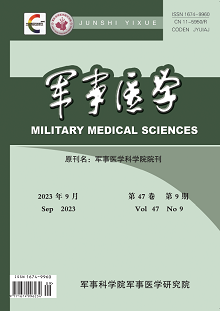Original articles
JIANG Ying, YAN Fulin, WANG Xun, XING Shuang, TU Yanhong, SONG Ruohui, SHEN Xing, YU Zuyin
Objective To assess the protective effect of 1,2-propanediol against radiation-induced oral mucositis in mice. Methods A murine model was established by subjecting the head and neck of mice to a dose of 17 Gy X-rays, and the impact of intraperitoneal prophylaxis with 1,2-propanediol at a dosage of 6 g/kg (administered 3 h prior to irradiation) on radiation-induced oral mucositis in mice was assessed. Sixteen male C57BL/6J mice were randomly and evenly divided into the irradiation and drug administration group. Survival at 30 days and changes in the month after irradiation were recorded. Another 12 mice were divided into the normal group, irradiation group and drug administration group, with 4 mice in each group. These mice were sacrificed 7 days after irradiation. The oral mucosa was stained with toluidine blue, HE staining, Ki67 and P63 immunohistochemistry. Results All the mice in the control group died within 11 days under 17 Gy irradiation. 1,2-propanediol administration significantly improved the survival of mice, and the 30 d survival rate reached 37.5%. The results of morphological observation showed no ulcers on the tongue of mice in the control group, but revealed (0.06±0.01)cm2 ulcers on the tongue of mice in the irradiation group, and the ulcers were (0.01±0.01)cm2 on the tongue of mice in the 1,2-propanediol group at day 7 after irradiation. The histopathological results showed that the structure of tongue mucosa epithelium in the irradiation group was severely damaged with thinner epithelial thickness, but was conserved with less thinned epithelial thickness in the 1,2-propanediol group. Ki-67 and P63 immunohistochemical results showed that keratinocyte proliferation cells and keratinocyte stem cells at day 7 after irradiation in the irradiation group were barely visible, while those in the 1,2-propanediol group showed significant proliferation and regeneration. Conclusion 1,2-propanediol has protective effect on radiation damage in mice with radiation-induced oral mucositis.
